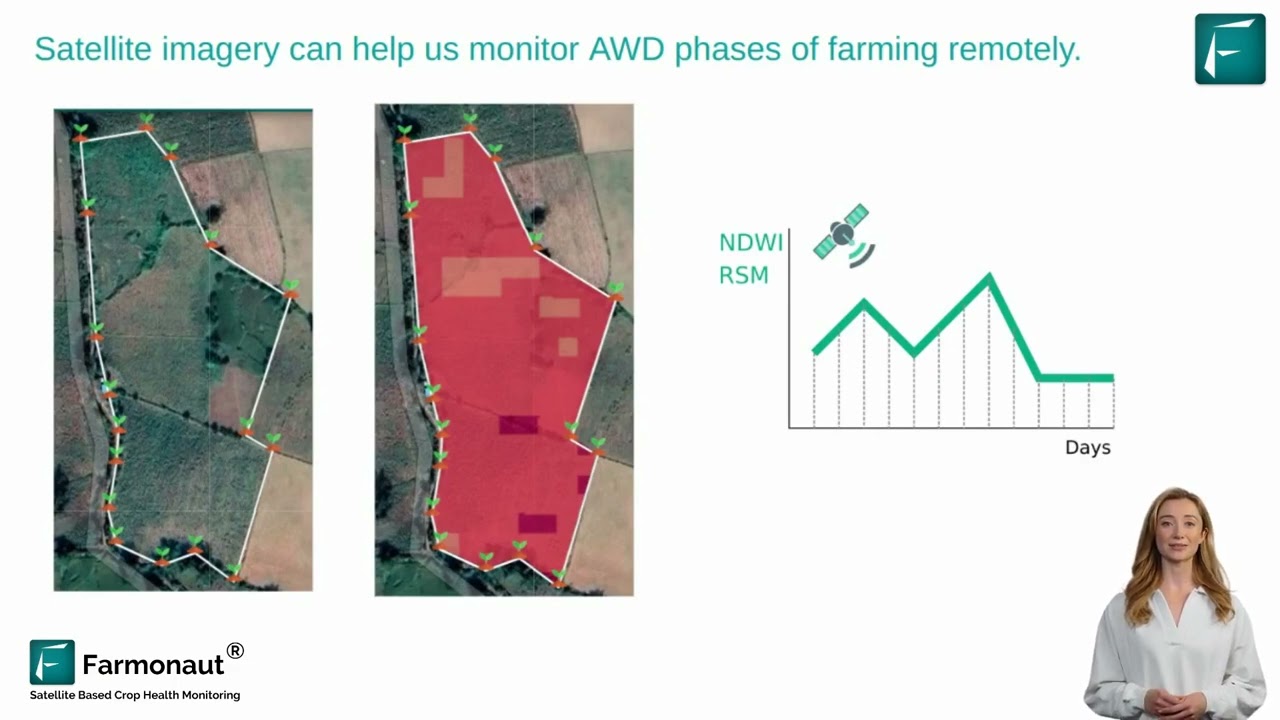Ultimate Guide: Maximize Farm Productivity with Seasonal Equipment Maintenance and Tax-Savvy Investments

“Proper compact tractor maintenance can increase farm equipment productivity by up to 25%.”
Welcome to our comprehensive guide on maximizing farm productivity through seasonal equipment maintenance and tax-savvy investments. At Farmonaut, we’re committed to empowering farmers, landscapers, and equipment operators with cutting-edge agritech solutions and practical advice. In this guide, we’ll explore essential compact tractor maintenance tips, seasonal lawn care strategies, and innovative ways to optimize your agricultural operations.
1. The Importance of Seasonal Equipment Maintenance
Maintaining your farm equipment is crucial for ensuring optimal performance and longevity. Let’s dive into some key aspects of seasonal maintenance:
1.1 Compact Tractor Maintenance Tips
- Regular oil and filter changes
- Tire pressure and tread inspection
- Battery maintenance and testing
- Cooling system checks
Implementing these compact tractor maintenance tips can significantly boost your equipment’s efficiency and lifespan.
1.2 Seasonal Lawn Care Guide
Our seasonal lawn care guide helps you maintain lush, healthy turf year-round:
- Spring: Soil testing and fertilization
- Summer: Proper mowing techniques and irrigation
- Fall: Overseeding and aeration
- Winter: Snow removal and equipment storage
1.3 Equipment Maintenance for Winter
Preparing your machinery for cold weather is essential. Here are some tips for equipment maintenance for winter:
- Drain and replace fluids with winter-grade options
- Check and replace antifreeze
- Inspect and replace worn parts
- Store equipment in a dry, protected area
2. Maximizing Farm Equipment Productivity
“Agricultural equipment tax deductions can save farmers an average of $5,000 annually on their tax bills.”
Boosting productivity is key to farm success. Here’s how to make the most of your equipment:
2.1 Efficient Digging Techniques
Master efficient digging techniques with compact excavators:
- Plan your dig path in advance
- Use the right bucket for the job
- Maintain proper positioning and angles
- Utilize machine features like boom swing and blade float
2.2 Mowing Season Preparation
Get ready for mowing season preparation with these steps:
- Sharpen and balance mower blades
- Clean or replace air filters
- Check and adjust deck height
- Inspect belts and replace if necessary
2.3 Tractor Cab Benefits
Invest in tractors with cabs to enjoy these tractor cab benefits:
- Increased operator comfort and productivity
- Protection from harsh weather conditions
- Reduced noise and vibration
- Enhanced safety features
3. Compact Excavator Optimization
Maximize the potential of your compact excavators with these strategies:
3.1 Choosing the Right Attachments
Select appropriate attachments for various tasks:
- Buckets for different soil types
- Hydraulic hammers for breaking concrete
- Augers for efficient hole drilling
- Grapples for handling debris
3.2 Proper Machine Positioning
Optimize your excavator’s performance through correct positioning:
- Maintain a stable base
- Position the machine for maximum reach
- Use the boom and arm for precise control
- Rotate the upper structure for efficient material placement
3.3 Regular Maintenance Checks
Keep your compact excavator in top condition with these maintenance tasks:
- Daily greasing of pivot points
- Track tension adjustments
- Hydraulic system inspections
- Undercarriage cleaning and inspection
4. Agricultural Equipment Tax Deductions
Understanding agricultural equipment tax deductions can significantly impact your bottom line:
4.1 Section 179 Deduction
Take advantage of Section 179 for immediate write-offs:
- Deduct the full purchase price of qualifying equipment
- Applies to both new and used equipment
- Limits and restrictions apply, consult a tax professional
4.2 Bonus Depreciation
Utilize bonus depreciation for additional tax benefits:
- Available for new and used equipment
- Percentage varies based on the tax year
- Can be combined with Section 179 for maximum savings
4.3 Regular Depreciation
Understand standard depreciation methods:
- Straight-line depreciation
- Declining balance method
- Sum-of-the-years’-digits method
Always consult with a qualified tax professional to ensure compliance and maximize your deductions.
5. Landscape Professional Resources
Enhance your landscaping business with these valuable resources:
5.1 Training and Certification
- Pursue industry-recognized certifications
- Attend workshops and seminars
- Utilize online learning platforms
5.2 Equipment Selection Guide
Choose the right tools for your landscaping needs:
- Mowers: Walk-behind, stand-on, or ride-on
- Trimmers and edgers
- Leaf blowers and vacuums
- Irrigation systems
5.3 Sustainable Landscaping Practices
Implement eco-friendly techniques:
- Native plant selection
- Water conservation strategies
- Integrated pest management
- Organic fertilization methods
Explore Farmonaut’s API for advanced landscape management solutions
6. Haymaking Preparation and Best Practices
Optimize your haymaking process with these tips:
6.1 Equipment Checklist
- Inspect and maintain mowers and conditioners
- Service rakes and tedders
- Prepare balers for optimal performance
- Check hay handling and storage equipment
6.2 Timing and Techniques
Maximize hay quality through proper timing and methods:
- Monitor crop maturity for optimal cutting time
- Implement proper cutting height
- Use conditioning to speed up drying
- Rake or ted at appropriate moisture levels
6.3 Storage and Preservation
Ensure long-term hay quality with proper storage:
- Store hay in a dry, well-ventilated area
- Use proper stacking techniques
- Consider hay preservatives for challenging conditions
- Monitor moisture content to prevent spoilage
7. Innovative Tech for Growers
Embrace cutting-edge technology to enhance your farming operations:
7.1 Precision Agriculture Solutions
- GPS-guided equipment for accurate field operations
- Variable rate technology for optimized input application
- Yield mapping for data-driven decision making
- Remote sensing for crop health monitoring
7.2 Farm Management Software
Streamline your operations with digital tools:
- Crop planning and record-keeping
- Inventory management
- Financial tracking and reporting
- Weather monitoring and forecasting
7.3 IoT and Sensors
Leverage the Internet of Things (IoT) for real-time insights:
- Soil moisture sensors
- Weather stations
- Equipment tracking devices
- Automated irrigation systems
Access Farmonaut’s API Developer Docs for advanced agritech integration
8. Seasonal Preparedness for Caretakers
Stay ahead of the seasons with these preparedness strategies:
8.1 Spring Readiness
- Perform post-winter equipment inspections
- Prepare soil and planting beds
- Service irrigation systems
- Stock up on seeds and fertilizers
8.2 Summer Management
Navigate the hot months effectively:
- Implement efficient watering schedules
- Monitor and control pests and diseases
- Maintain proper mowing heights
- Provide shade and ventilation for livestock
8.3 Fall Preparations
Get ready for the cooler seasons:
- Harvest and store crops properly
- Prepare equipment for winter storage
- Conduct soil tests and amendments
- Winterize buildings and water systems
8.4 Winter Management
Navigate the cold months successfully:
- Implement snow and ice management plans
- Maintain livestock housing and feeding areas
- Protect sensitive plants and equipment
- Plan for the upcoming growing season

9. Uptime Solutions for Contractors
Maximize equipment availability and efficiency:
9.1 Preventive Maintenance Schedules
- Develop and adhere to regular maintenance intervals
- Use telematics for predictive maintenance
- Train operators in daily equipment checks
- Keep detailed maintenance records
9.2 Fleet Management Strategies
Optimize your equipment fleet:
- Implement GPS tracking for efficient dispatching
- Analyze utilization data to right-size your fleet
- Rotate equipment to balance usage
- Consider rental options for peak periods
9.3 Emergency Repair Preparedness
Minimize downtime with these strategies:
- Stock critical spare parts
- Establish relationships with reliable repair services
- Train staff in basic troubleshooting and repairs
- Consider extended warranties for major equipment
10. Productivity-Enhancing Features
Explore these advanced features to boost your operations:
10.1 Automated Guidance Systems
- Implement auto-steer technology for precise field operations
- Utilize RTK correction for centimeter-level accuracy
- Reduce operator fatigue and increase efficiency
- Minimize overlap and skips in field applications
10.2 Telematics and Remote Monitoring
Leverage data for informed decision-making:
- Track equipment location and usage
- Monitor fuel consumption and efficiency
- Receive real-time alerts for maintenance needs
- Analyze performance data for optimization
10.3 Advanced Implement Controls
Maximize the potential of your attachments:
- ISOBUS compatibility for seamless implement integration
- Section control for precise input application
- Variable rate technology for optimized resource use
- Implement automation for complex operations
11. Finance and Rental Options
Explore various ways to acquire and manage your equipment:
11.1 Equipment Financing
- Compare lease vs. purchase options
- Explore low-interest agricultural loans
- Consider manufacturer financing programs
- Evaluate the impact on cash flow and taxes
11.2 Rental Strategies
Optimize your equipment usage through rentals:
- Rent specialized equipment for seasonal needs
- Use rentals to test equipment before purchasing
- Leverage rentals to manage peak workloads
- Compare long-term rental vs. ownership costs
11.3 Equipment Sharing and Cooperatives
Explore collaborative equipment management:
- Join or form local equipment sharing groups
- Participate in cooperative ownership programs
- Implement clear usage and maintenance agreements
- Consider custom hiring for specialized operations
Seasonal Equipment Maintenance Checklist
| Season | Compact Tractors | Lawn Mowers | Excavators |
|---|---|---|---|
| Spring |
|
|
|
| Summer |
|
|
|
| Fall |
|
|
|
| Winter |
|
|
|
FAQ Section
- Q: How often should I perform maintenance on my compact tractor?
A: Regular maintenance should be performed according to your tractor’s manual, typically every 50-100 hours of operation or seasonally, whichever comes first. - Q: What are the key components to check during a pre-season inspection of lawn care equipment?
A: Key components include air filters, spark plugs, fuel systems, blades, belts, tires, and safety features. - Q: How can I maximize my agricultural equipment tax deductions?
A: Consult with a tax professional to take full advantage of Section 179 deductions, bonus depreciation, and regular depreciation methods for your specific situation. - Q: What are the benefits of using precision agriculture technologies?
A: Precision agriculture can improve efficiency, reduce input costs, increase yields, and minimize environmental impact through targeted resource application. - Q: How can I prepare my equipment for winter storage?
A: Clean equipment thoroughly, change fluids, apply rust inhibitors, store in a dry area, and disconnect batteries for long-term storage.
Conclusion
Maximizing farm productivity through seasonal equipment maintenance and tax-savvy investments is crucial for success in modern agriculture. By implementing the strategies outlined in this guide, you can enhance your operations’ efficiency, reduce downtime, and make informed decisions about equipment acquisition and management.
Remember to stay informed about the latest innovations in agricultural technology and leverage tools like Farmonaut’s satellite-based farm management solutions to further optimize your farming practices. With proper maintenance, strategic investments, and the power of data-driven insights, you can take your agricultural operations to new heights of productivity and profitability.



















